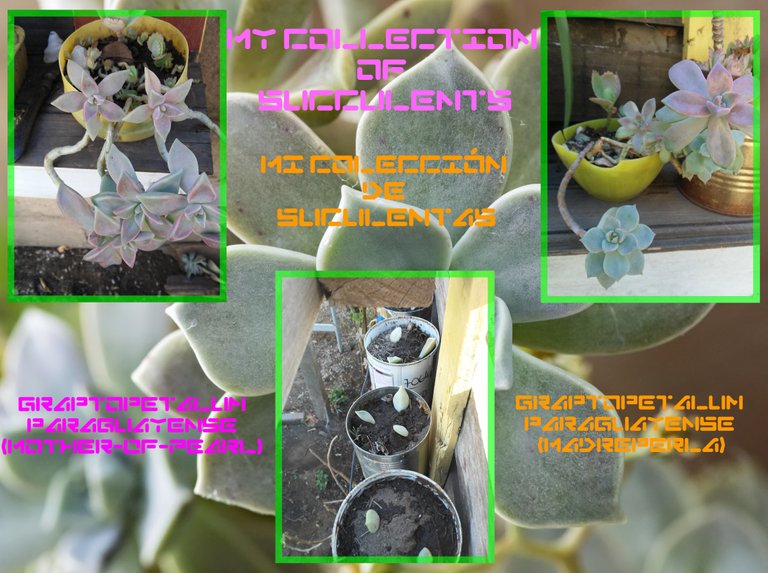
After finishing the pruning and maintenance of the orchard and the garden at the end of winter, I begin to dedicate myself in my free time (it is what I have to spare, since I am retired) to the garden.
And the first plants that I will dedicate myself to are my collection of succulents. They say that they are the plants preferred by women, rarely are men caring for these plants. Anyway... here you have one. I have a particular affection for plants in general and my collection of succulents (they are actually my wife's) are an important part of the garden, small but well laid out and tidy.
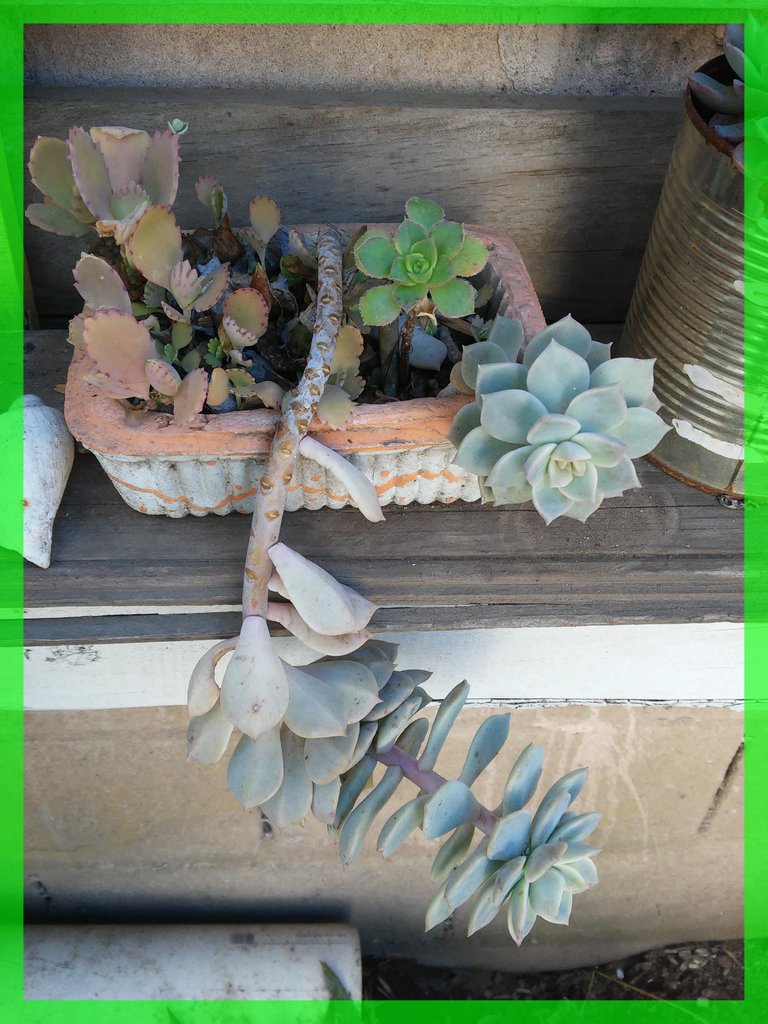
Since there are many of them, I arranged them in the patio on some pallets that were given to me by a building materials store and they are the ones used to bring ceramic bricks and various boxes from the factory. I found it lying on the street, I fixed it, I painted it and I found the ideal instrument to place all the succulents. And also to protect them from the cold during the winter, since I cover them with a very resistant plastic cover that prevents the cold from damaging them.
Succulents themselves resist low temperatures quite well. The biggest problem is the liquid that they have in their fleshy leaves. When freezing is when the plant suffers and often dries up. A typical example is aloe vera, which, despite almost always being cultivated in open external spaces, grows by its own nature and conviction in protected places -under other plants, on the side of walls, etc-.
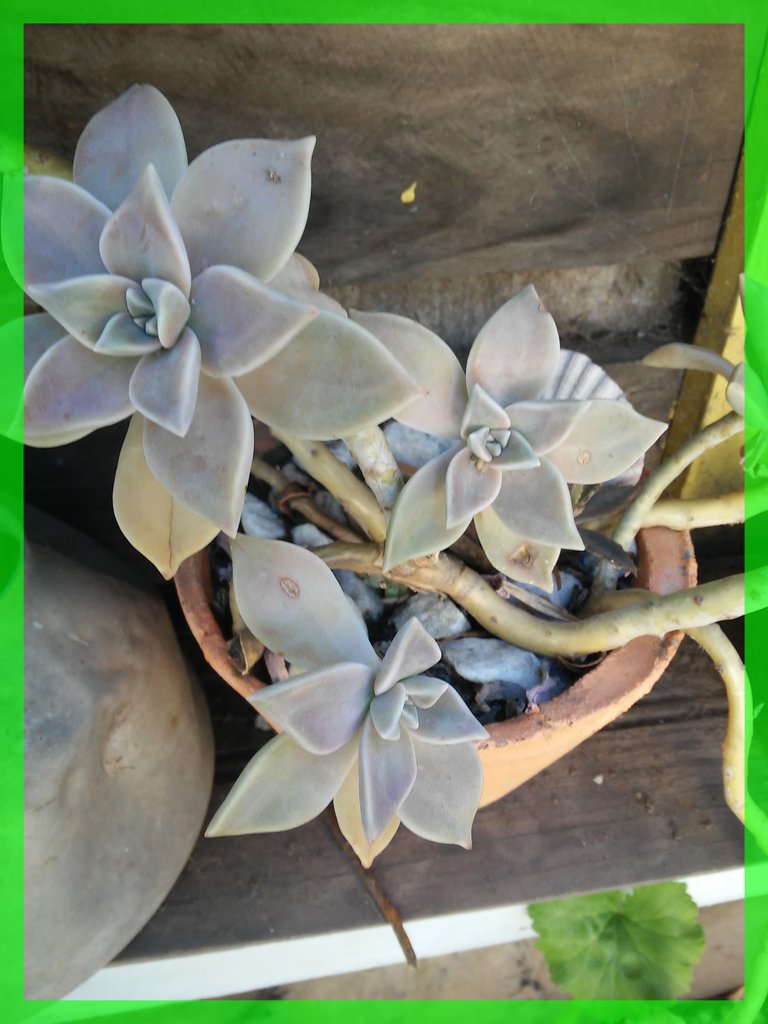
This position prevents these plants from getting damp in the morning in the winter in the first place and then freezing when the temperature drops below zero. And succulents are no exception. We can have them outside all year long. On condition of protecting them during the time of excessively rigid temperatures. Plants are too smart...
With this introduction over, let's move on to the facts. I re-arranged them neatly in this kind of "succulent display case" -the back boards are perfectly screwed to the wall so there is no danger of the structure falling- and I began to clean each plant of dead leaves and stems and other impurities.
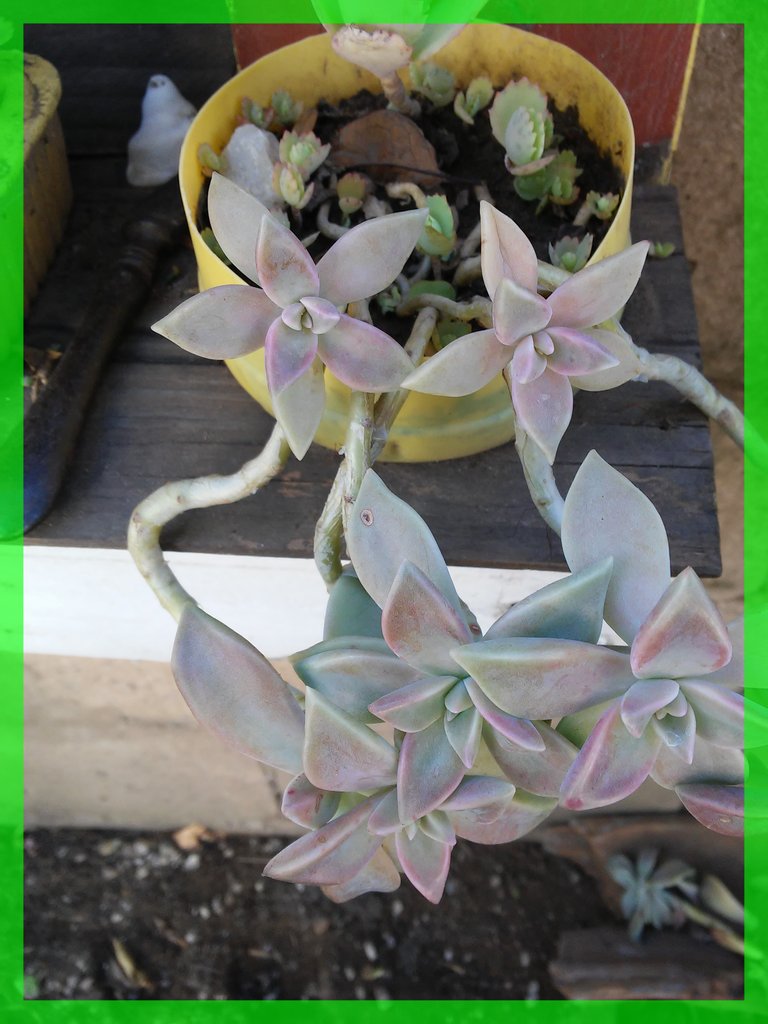
Something that I have begun to do this year is to catalog them and for this I have used some European magazines that I have received from some subscriptions made. There is such a variety of succulents that most people have an excellent variety of plants, but do not know their name.
The succulent that I am going to talk about today is scientifically called Graptopetalum, it is native to Mexico, the southwestern part of the United States, where it grows in its natural state.
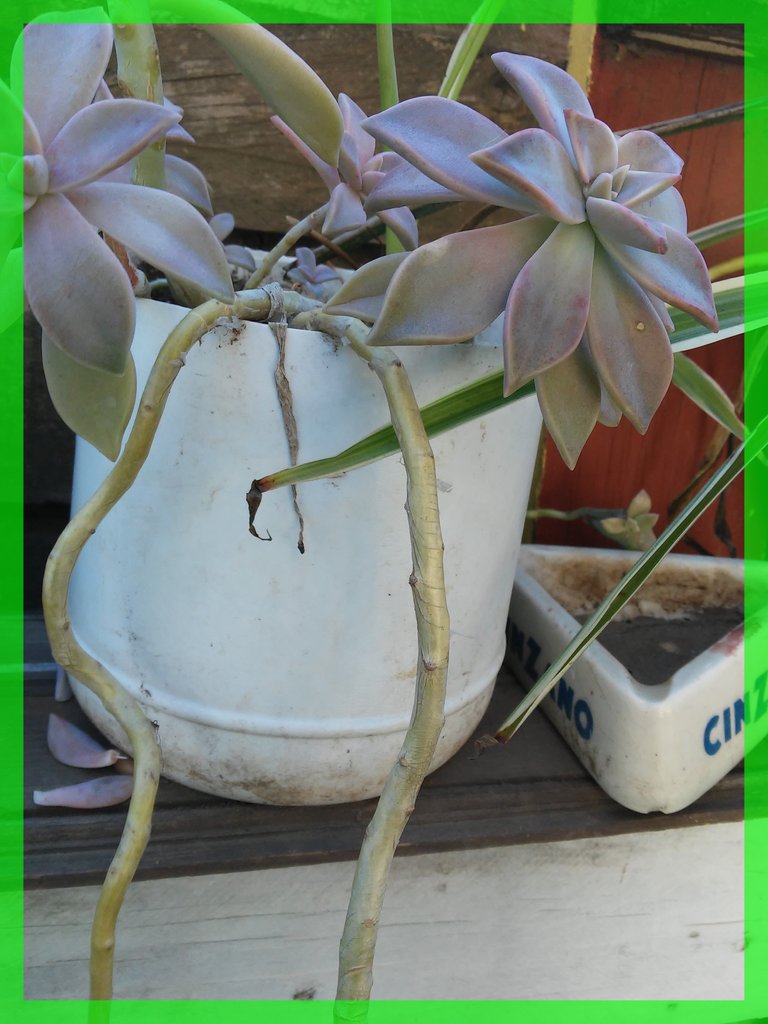
In all honesty I don't know the common name, that is, the name by which most people know it, its scientific name is already quite difficult to pronounce. If anyone knows, you can incorporate it in the comments and we will catalog it.
Noble, resistant and easy to reproduce.
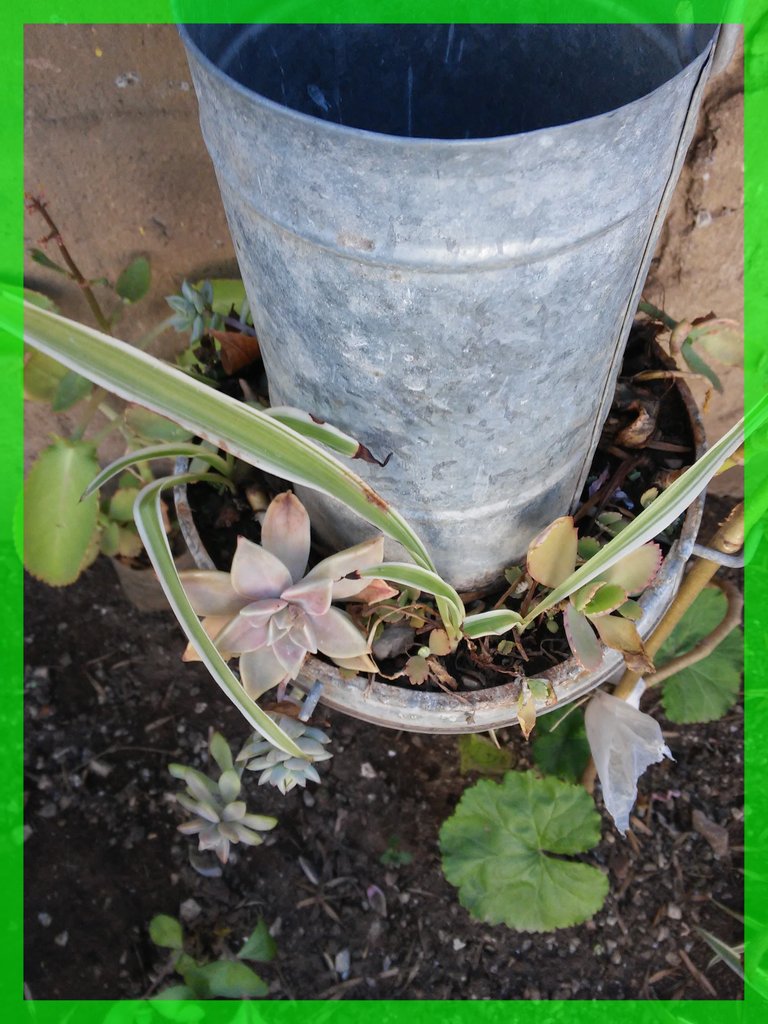
Succulents themselves do not present too many problems for their reproduction, but the Graptopetalum is simply phenomenal.
It is enough to collect the leaves that are falling -preferably those that are not dry or withered-, place them again in a container with soil, with the part that is attached to the stem downwards, and in no time we will obtain a new and beautiful plant.
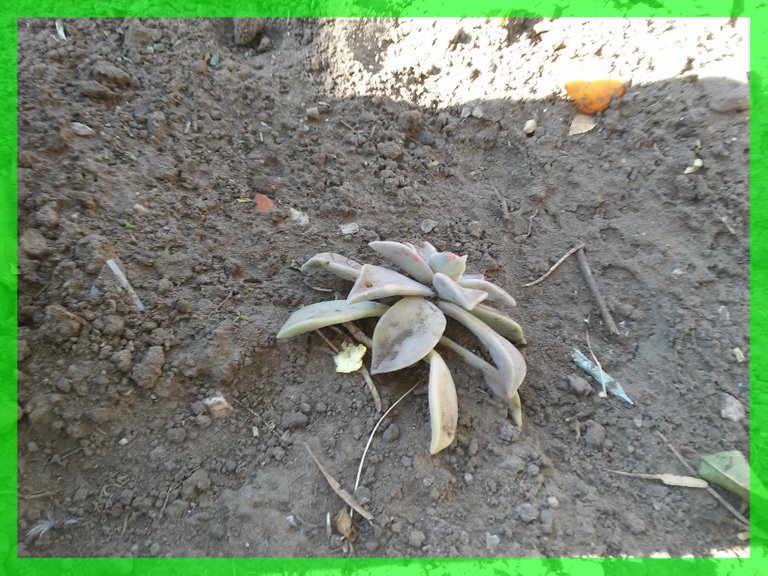
I have made a test and photos so that all the #hivers friends can verify how easy it is to reproduce this succulent. In fact, we have been reproducing all these plants together with my wife following this system. Stems, leaves, branches given by friends, and even when we visit the nurseries we ask for a lot of the material that is thrown away in the shops and the result is amazing.
Of course, perhaps selling plants with broken branches or fallen leaves is not very attractive from a commercial marketing point of view. But for us who seek only to reproduce them without profit, it is a great opportunity to obtain new plants absolutely free, work and dedication do the rest, obviously.
Many varieties and a very pretty flower.
This type of succulent has 17 varieties and according to what I have been able to consult in different sources, I believe our plant belongs to the genus Graptopetalum paraguayense which, in turn, is divided into two more subgenera. In Wikipedia I read that it is also called mother-of-pearl plant or ghost plant. It is the first time that I feel these names or they adapt too much to the appearance of the plant, but anyway, if this is true we can catalog it with that common name.
Like many succulents, it gives a small white star-shaped flower when summer begins, since it prefers high temperatures to develop in all its expression. Its leaves are bluish gray and pinkish in color and are very fleshy. It also has a very nice decorative aspect, because it hangs from the pot as if it were a pothos (you can see it in the photos) and therefore it serves to expand and cover the space available to them.

The flower of Graptopetalum paraguayense (Mother-Of-Pearl).
The crown of velvety leaves characteristic of an adult plant with the first flower of the year a few days before the beginning of spring.
And the buds that herald the opening of other flowers in the coming days.
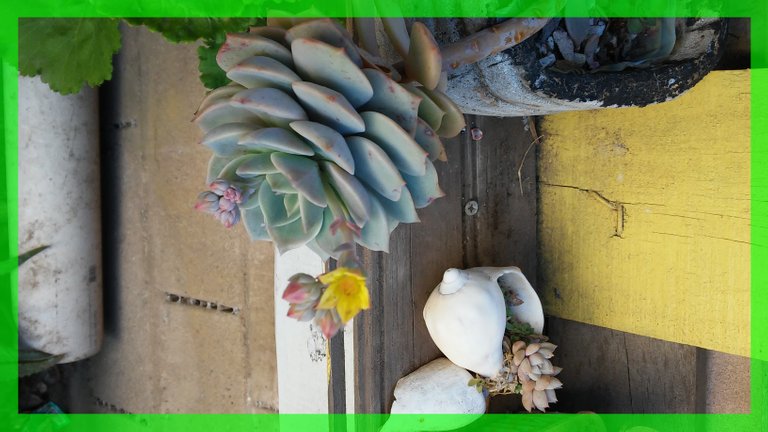
Terminados los trabajos de poda y mantenimiento de la huerta y el jardín de fines de invierno comienzo a dedicarme en mis tiempos libres (es lo que tengo de sobra, ya que soy jubilado) al jardín.
Y a las primeras plantas que me dedicaré son a mi colección de suculentas. Dicen que son las plantas preferidas por las mujeres, rara vez se ven hombres cuidando a estas plantas. En fin... acá tienen a uno. Tengo un particular cariño por las plantas en general y mi colección de suculentas (en realidad son de mi esposa) son parte importante del jardín, pequeño pero bien dispuesto y ordenado.

Como son muchas las acomodé en el patio en unos pallets que me regalaron en un negocio de materiales de construcción y son los que se usan para traer de fábrica los ladrillos cerámicos y cajas varias. Lo encontré tirado en la calle, lo arreglé, lo pinté y encontré el instrumento ideal para colocar todas las suculentas. Y también para protegerlas del frío durante el invierno, ya que las tapo con una cubierta plástica muy resistente que impide que el frío las dañe.
En sí las suculentas resisten bastante bien las bajas temperaturas. El mayor problema es el líquido que poseen en sus hojas carnosas. Al congelarse es cuando la planta sufre y muchas veces se seca. Un ejemplo típico es el aloe vera que no obstante casi siempre se cultiva en espacios externos abiertos crece por propia naturaleza y convicción en los lugares protegidos -debajo de otras plantas, al costado de los muros, etc.
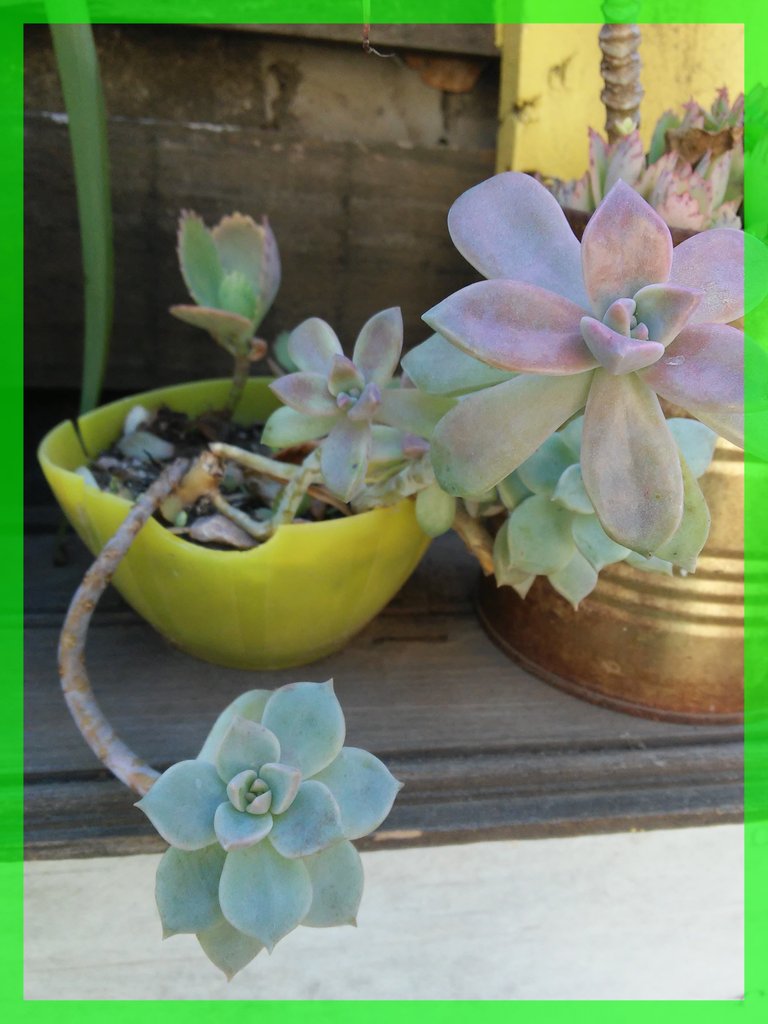
Esta posición impide en primer lugar que estas plantas se humedezcan con el frío de la mañana durante el invierno y se congelen luego cuando la temperatura desciende por debajo de cero grado. Y las suculentas no son la excepción. Podemos tenerlas afuera todo el año. A condición de protegerlas durante la epoca de las temperaturas demasiado rígidas. Las plantas son demasiado inteligentes...
Terminada esta introducción pasemos a los hechos. Volví a disponerlas ordenadamente en esta especie de "exhibidor de suculentas" -las maderas traseras están perfectamente atornilladas al muro de manera que no hay peligro que se caiga la estructura- y comencé a limpiar cada planta de las hojas y tallos muertos y otras impurezas.

Algo que he comenzado a hacer este año es a catalogarlas y para ello me he servido de algunas revistas europeas que he recibido de algunas subscripciones hechas. Es tanta la variedad de suculentas que la mayor parte de las personas tienen una excelente variedad de plantas, pero no conoce su nombre.
La suculenta de la que les voy a hablar hoy se llama científicamente Graptopetalum, es originaria de México la parte sudoeste de los EE. UU. donde crece en estado natural.
Con toda honestidad no le conozco el nombre vulgar, es decir el nombre con que la conoce la mayor parte de la gente, su nombre científico es ya bastante difícil de pronunciar. Si alguien lo sabe lo puede incorporar en los comentarios y lo vamos catalogando.
Noble, resistente y de fácil reproducción.
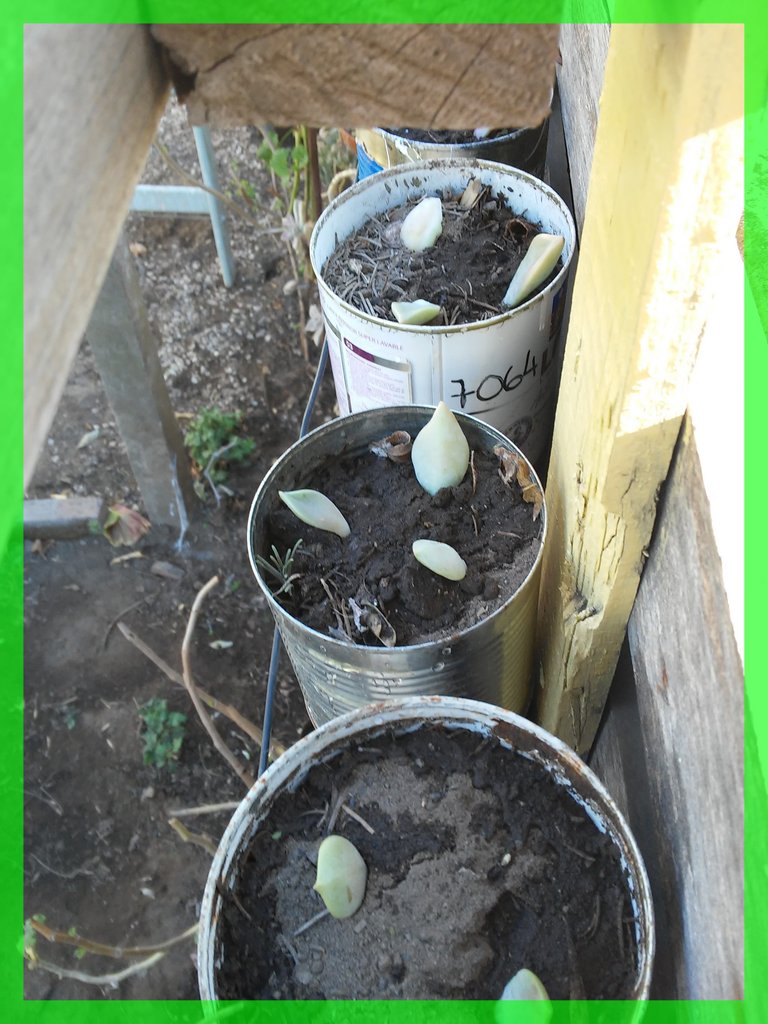
En sí las suculentas no presentan demasiados problemas para su reproducción, pero la Graptopetalum es simplemente fenomenal.
Es suficiente recoger las hojas que se van cayendo -preferentemente que no estén secas o marchitas-, colocarlas de nuevo en un recipiente con tierra, con la parte que se agarra en el tallo hacia abajo, y dentro d epoco obtendremos una nueva y hermosa planta.
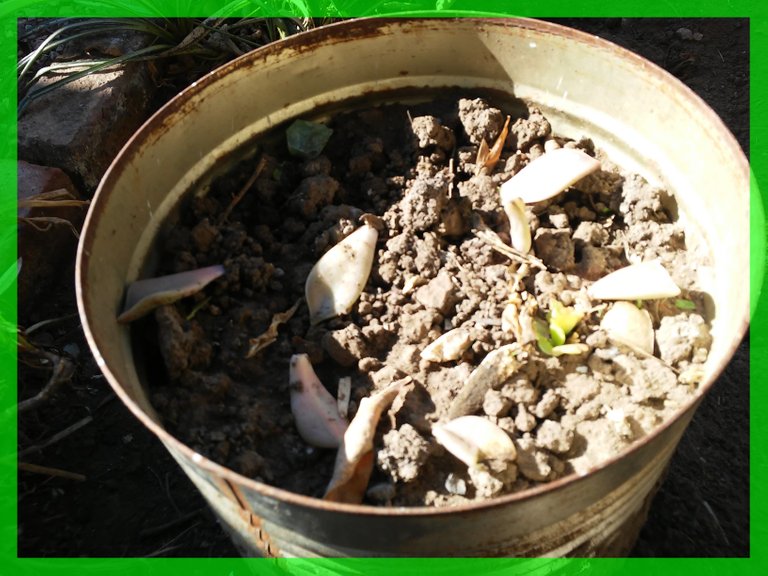
He hecho una prueba y fotos para que todos los amigos #hivers puedan verificar lo fácil que es reproducir esta suculenta. En realidad todas estas plantas las hemos ido reproduciendo junto a mi esposa siguiendo este sistema. Tallos, hojas, ramas regaladas por amigos, e incluso cuando visitamos los viveros pedimos mucho del material que se tira en los negocios y el resultado es asombroso.
Claro, tal vez vender plantas con ramas rotas u hojas caídas no sea desde el punto de vista del marketing comercial muy atrayente. Pero para nosotros que buscamos solo reproducirlas sin ánimo de lucro es una estupenda oportunidad de conseguir nuevas plantas en forma absolutamente gratis, el trabajo y la dedicación hacen el resto, obviamente.
Muchas variedades y una flor muy bonita.

Este tipo de suculenta tiene 17 variedades y de acuerdo a lo que he podido consultar en distintas fuentes creo nuestra planta pertenece al género Graptopetalum paraguayense que, a su vez, se divide en dos subgéneros más. En Wikipedia leo que también se la llama planta madre perla o planta fantasma. Es la primera vez que siento estos nombres o se adaptan demasiado al aspecto de la planta, pero en fin, si esto es verdad podemos catalogarla con ese nombre común.
Como muchas suculentas da una flor chiquita blanca en forma de estrella cuando comienza el verano, ya que prefiere las altas temperaturas para desarrollarse en toda su expresión. Sus hojas son de un color gris azulado y rosado y son bien carnosas. Tiene además un aspecto decorativo muy bonito, porque cuelga de la maceta como si fuera un potus (lo pueden ver en las fotos) y por lo tanto sirve para ampliar y cubrir el espacio que tienen a disposición.
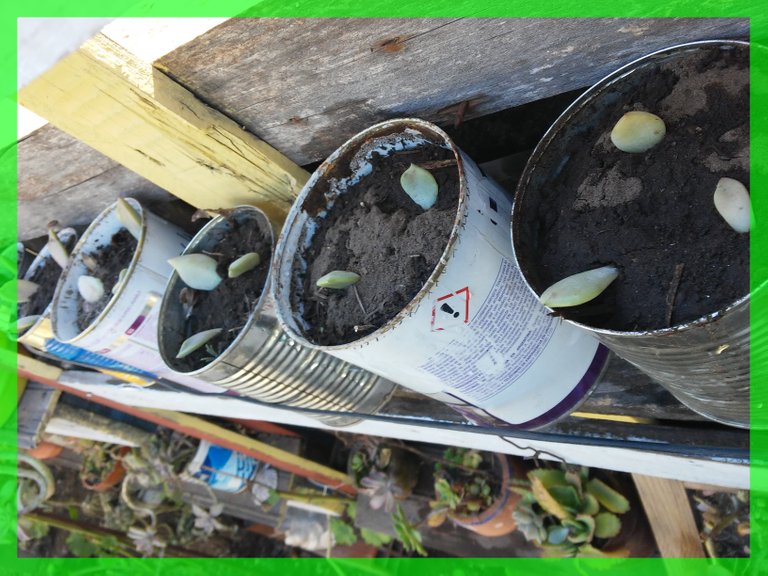
La flor de la Graptopetalum paraguayense (Madreperla).
La corona de hojas aterciopeladas característica de una planta ya adulta con la primera flor del año pocos días antes de iniciar la primavera.
Y los capullos que preanuncian la apertura de otras flores en los próximos días.
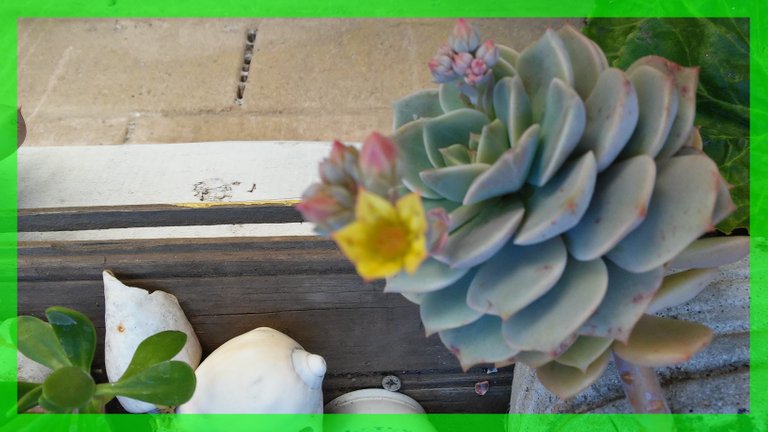
The image used as background in the first image illustrating this post is property of Didier Descouens under CC BY-SA 4.0 license.
La imagen usada como fondo en la primera imagen que ilustra este post es propiedad de Didier Descouens bajo licencia CC BY-SA 4.0
Translated with / Traducido con: www.DeepL.com/Translator (free version)
Own images. Text Separator / Imágenes propias. Separador de Textos : The Peak Studio




